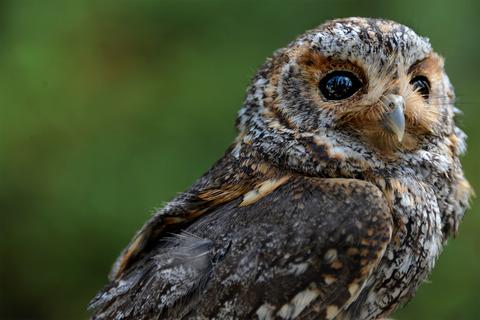当前位置:
X-MOL 学术
›
Ecol. Evol.
›
论文详情
Our official English website, www.x-mol.net, welcomes your
feedback! (Note: you will need to create a separate account there.)
Evidence of postbreeding prospecting in a long‐distance migrant
Ecology and Evolution ( IF 2.3 ) Pub Date : 2020-12-16 , DOI: 10.1002/ece3.7085 Max Ciaglo 1 , Ross Calhoun 1 , Scott W Yanco 2 , Michael B Wunder 2 , Craig A Stricker 3 , Brian D Linkhart 1
中文翻译:

长途迁徙者繁殖后勘探的证据
更新日期:2021-01-08
Ecology and Evolution ( IF 2.3 ) Pub Date : 2020-12-16 , DOI: 10.1002/ece3.7085 Max Ciaglo 1 , Ross Calhoun 1 , Scott W Yanco 2 , Michael B Wunder 2 , Craig A Stricker 3 , Brian D Linkhart 1
Affiliation

|
- Organisms assess biotic and abiotic cues at multiple sites when deciding where to settle. However, due to temporal constraints on this prospecting, the suitability of available habitat may be difficult for an individual to assess when cues are most reliable, or at the time they are making settlement decisions. For migratory birds, the postbreeding season may be the optimal time to prospect and inform settlement decisions for future breeding seasons.
- We investigated the fall movements of flammulated owls (Psiloscops flammeolus) within breeding habitat after fledglings had gained independence and before adults left for migration. From 2013 to 2016, we trapped owls within a breeding population wherein all nesting owls and their young have been banded since 1981. We used stable isotopes in combination with mark–recapture data to identify local individuals and differentiate potential prospecting behavior from other seasonal movements such as migration or staging.
- We commonly captured owls in the fall—predominantly hatch‐year owls—that were not known residents of the study area. Several of these nonresident owls were later found breeding within the study area. Stable isotope data suggested a local origin for virtually all owls captured during the fall.
- Our results suggest that hatch‐year flammulated owls, but also some after‐hatch‐year owls, use the period between the breeding season and fall migration to prospect for future breeding sites. The timing of this behavior is likely driven by seasonally variable costs associated with prospecting.
- Determining the timing of prospecting and the specific cues that are being assessed will be important in helping predict the extent to which climate change and/or altered disturbance regimes will modify the ecology, behavior, and demographics associated with prospecting.
中文翻译:

长途迁徙者繁殖后勘探的证据
生物体在决定定居地点时会评估多个地点的生物和非生物线索。然而,由于勘探的时间限制,个人可能很难评估线索何时最可靠或做出定居决定时可用栖息地的适宜性。对于候鸟来说,繁殖后季节可能是预测未来繁殖季节并为定居决策提供信息的最佳时间。
我们调查了火鸮( Psiloscops flammeolus )在幼鸟获得独立后和成鸟迁徙之前在繁殖栖息地内的坠落运动。从 2013 年到 2016 年,我们将猫头鹰困在一个繁殖种群中,自 1981 年以来,所有筑巢猫头鹰及其幼崽都被圈起来。我们使用稳定同位素结合标记重新捕获数据来识别当地个体,并将潜在的勘探行为与其他季节性活动(例如作为迁移或分期。
我们通常在秋天捕获猫头鹰(主要是孵化年猫头鹰),这些猫头鹰不是研究区域的已知居民。后来发现其中几只外地猫头鹰在研究区域内繁殖。稳定同位素数据表明,秋季捕获的几乎所有猫头鹰都来自当地。
我们的研究结果表明,孵化年的火鸮,以及一些孵化后的猫头鹰,利用繁殖季节和秋季迁徙之间的时期来寻找未来的繁殖地点。这种行为的发生时间可能是由与勘探相关的季节性可变成本驱动的。
确定勘探的时间和正在评估的具体线索对于帮助预测气候变化和/或改变的干扰制度将在多大程度上改变与勘探相关的生态、行为和人口统计数据非常重要。











































 京公网安备 11010802027423号
京公网安备 11010802027423号